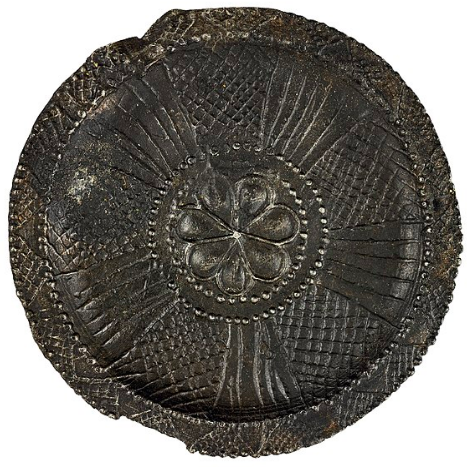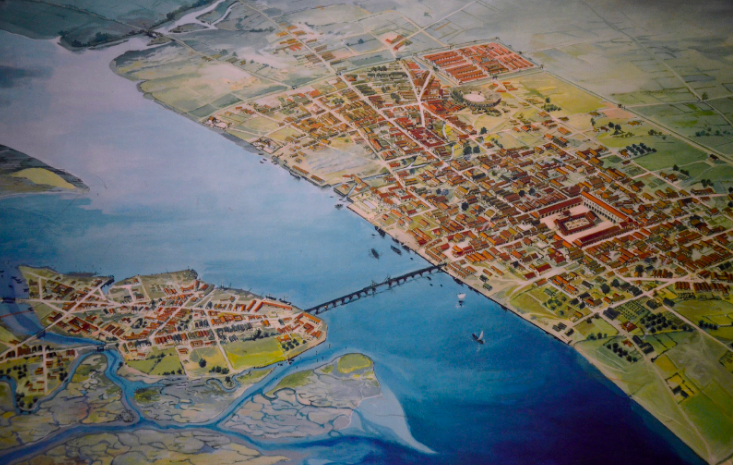Lead Isotopes in Archaeology
Lead (Pb) has four stable isotopes (204Pb, 206Pb, 207Pb and 208Pb), the latter three of which represent the end of radioactive decay chains (uranium, actinium and thorium, respectively). In archaeological studies, lead isotopes are measured for two main applications: tracing origin of metal artefacts and reconstructing human origin and migratory patterns.
Lead isotopes are present in many geological processes – from surficial weathering to metamorphic and hydrothermal activity – and thus their isotopic signature can be pinpointed to the geologic origin of their host rock.
Tracing origin of metal artefacts
In the case of tracing the origin of metal artefacts, Pb can be analysed to estimate the geological origin of the metal within artefacts, providing important information on trade and the movement of archaeological artefacts. It is possible to decipher this origin in objects where lead is a major element (e.g. lead pigments, lead bronze) as well as in objects where lead is a minor element (e.g. copper, brass, iron, silver) as lead has been found to not fractionate during the melting process. Given the lack of characteristic change in lead between mining and the development of objects via smelting, lead isotopes can be used to match artefacts to their likely origin.
Sharpe et al. (2016) analysed a suite of lead isotopes in archaeological materials from the Maya region along the Yucatan Peninsula in Mexico. The researchers found a trend of lead signatures across the landscape – ranging from relatively high 207Pb/204Pb and 206Pb/207Pb compared to relatively low ratios in the volcanic highlands. This mapping of lead isotopes permits the matching of metal artefacts to their origin on the landscape.
Tracking human mobility
In an effort to trace the origin and movement of human populations, Pb acts in a similar manner as strontium isotopes. The use of both isotopes is based on the fact that humans and animals take up strontium and lead into their bones, teeth and other structures through food consumption – automatically taking up the isotopic signature of the underlying soils (and consequently rocks) where the consumed plants were growing.
In some cases, lead isotope results lead to multiple possible originating regions, depending on the amount of complementary evidence available. In order to narrow down the potential locations, multi-isotope analysis (utilizing Pb + Sr) can be helpful.
Beyond connecting humans to their movement and origin, lead isotopes have also been utilized to pinpoint periods of toxic lead pollution. Scott et al. (2019) analysed lead in the femur bones of people living in Londinium during the Roman Iron Age, buried in east Yorkshire. The researchers found lead contamination levels 70 times higher than populations living in the area prior to the Romans – consistent with widespread significant lead exposures. Such extreme exposures would have likely resulted in poor health and low birth rates.
At Isobar Science, lead isotopic ratios (e.g. 206Pb/204Pb, 207Pb/204Pb, 208Pb/204Pb) can be measured in various sample types such as igneous and metamorphic rocks, mineral dust, marine and lacustrine sediments, bones, tooth enamel, soil, and others. Uncertainties are reported within a 95% confidence interval and presented on a plot with representative ranges of the lead isotopic ratios of various materials.
Learn more about lead isotope applications.
References
Scott, S.R., Shafer, M.M., Smith, K.E., Overdier, J.T., Cunliffe, B., Stafford Jr, T.W. and Farrell, P.M., (2020). Elevated lead exposure in Roman occupants of Londinium: new evidence from the archaeological record. Archaeometry, 62(1), pp.109-129.
Sharpe, A.E., Kamenov, G.D., Gilli, A., Hodell, D.A., Emery, K.F., Brenner, M. and Krigbaum, J., (2016). Lead (Pb) isotope baselines for studies of ancient human migration and trade in the Maya region. PloS one, 11(11), p.e0164871.
Image references
Metal artefact: https://commons.wikimedia.org/wiki/File:Bord_in_tin-loodlegering,_collectie_Raakvlak,_col_Beuck-1-1-A-243.jpg
Londinium reconstruction: https://en.wikipedia.org/wiki/Londinium#/media/File:Reconstruction_drawing_of_Londinium_in_120_AD,_Museum_of_London_(34881481351).jpg


